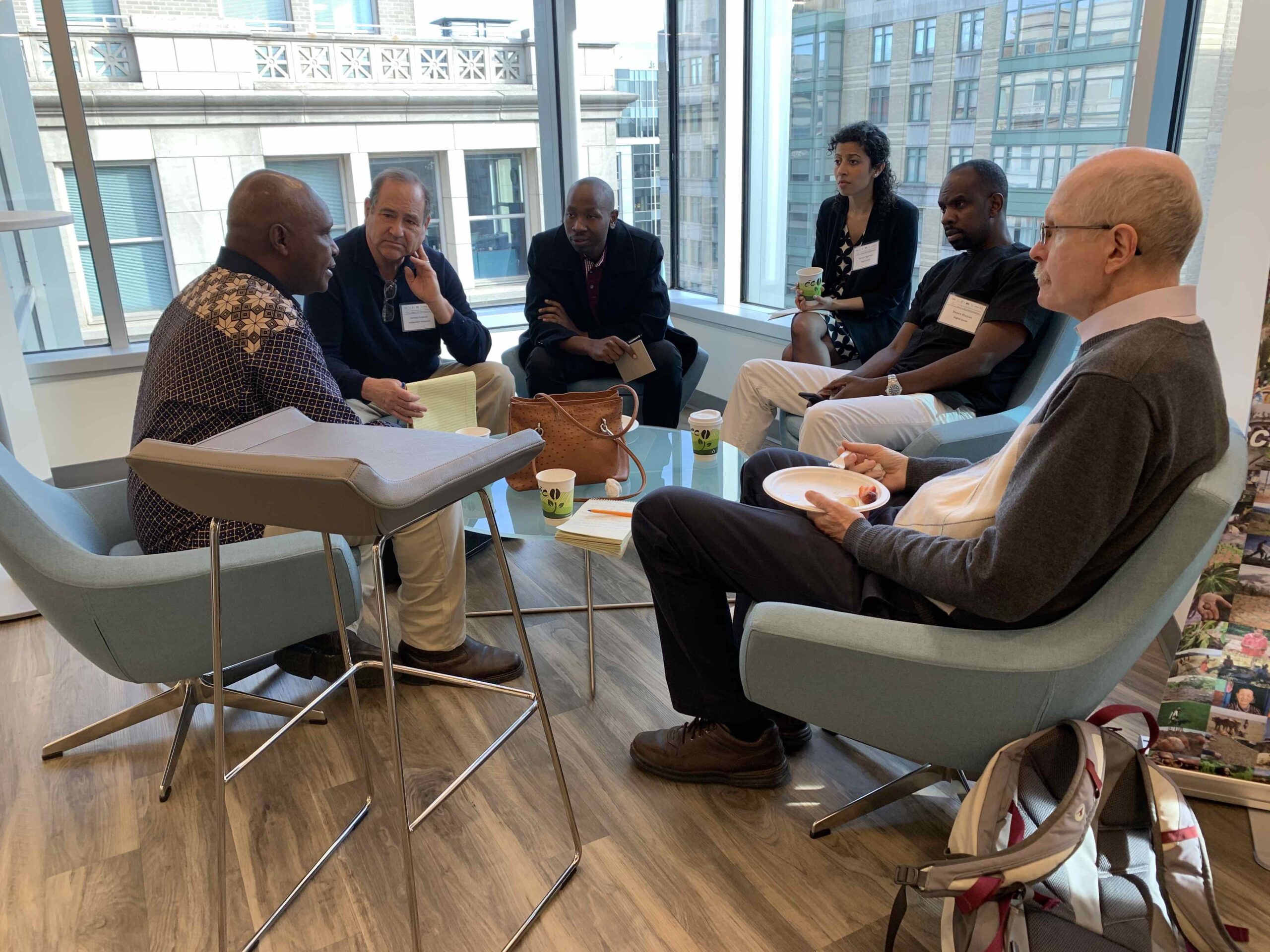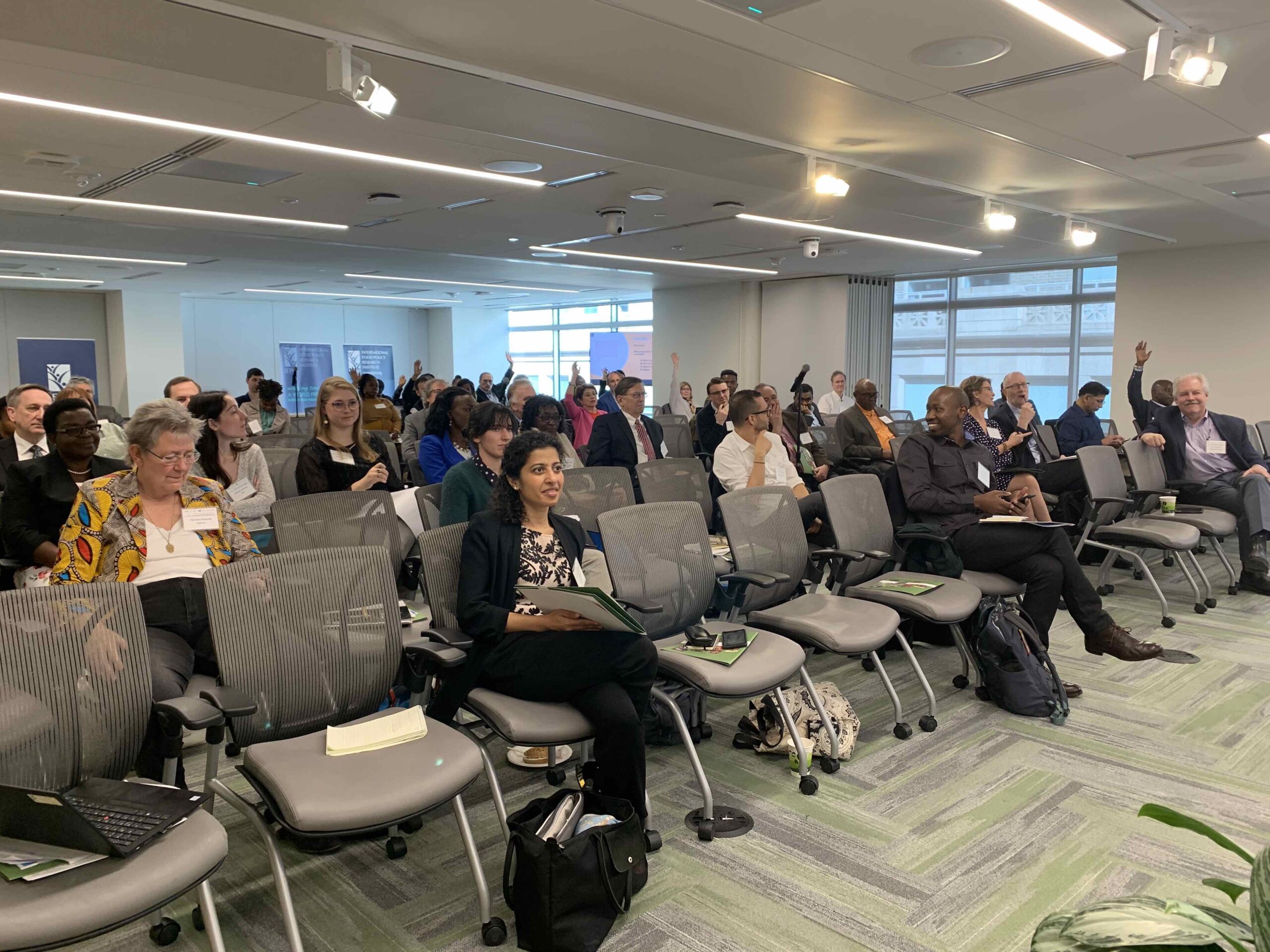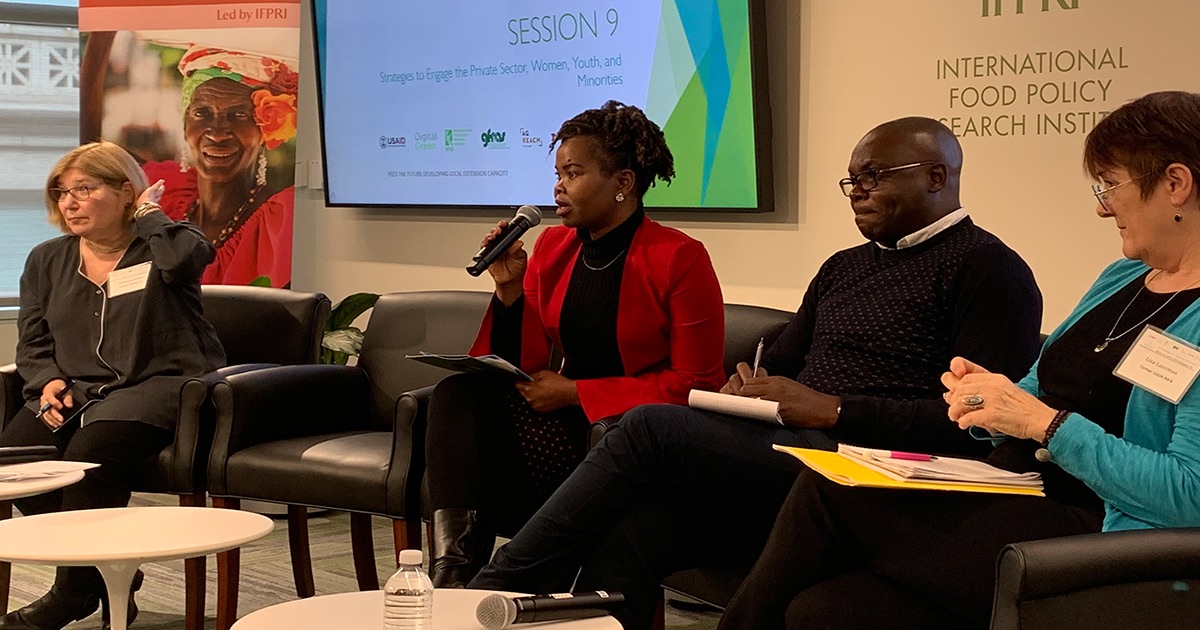Introduction
The Feed the Future Developing Local Extension Capacity Annual Community of Practice Convening took place in Washington, D.C. on March 4-5, 2020. The event was co-organized by DLEC, a USAID funded project led by Digital Green in partnership with International Food Policy Research Institute (IFPRI) and Global Forum for Rural Advisory Services (GFRAS), AgReach (University of Illinois), and the CGIAR Research Program on Policies, Institutions, and Markets (PIM). There were 65 in-person and online participants from 16 countries. 
Participants discussed “What will extension look like 10-20 years from now? What will change or won’t? What are we already learning that relates to that future?” To this end, the organizers called for inputs and competitively selected speakers, who presented using formal talks, panel discussions, lightning inputs, and a poster session. Abstracts and presentations are available here. In addition, recordings of some panels are available here.
The keynote speaker, Robynne Anderson (President of Emerging Ag) spoke about the future of food systems. She stated we need extension systems fit for the purpose that works territorially with local experts but using a systems perspective. Technology allows us to share timely, multidirectional, relevant information with feedback loops. Extension has gone through ups and downs of political support; thus, proponents must sharpen the dial, develop durable solutions, show outcomes, and intersect what we are doing with global conversations such as the 2021 World Food Systems Summit.
Themes
Maura Barry (Senior Deputy Assistant Administrator for the United States Agency for International Development) spoke about the Agency’s journey to self-reliance and the need to measure success differently and crowd in collective resources using a multisectoral strategy. She also spoke about how engaging with the private sector can help build resilient extension systems. Rob Bertram (Chief Scientist at USAID BFS) stated that knowledge is key to food security and development. We need more convergence between agriculture and nutrition – the human face of agriculture – and USAID now has a Chief Nutritionist.
Panellists discussed the need for ethical professional private sector extension providers and the role of the public sector for convening and providing guidance. We need public-private partnerships and strengthening partnerships involves identifying key players, capacity building, professionalization and certification, elaborating codes of conduct, and creating national platforms. Producer organizations are key as providers and users of extension services. 
We need to build resilient market systems; thus entrepreneurship is important. We need to expand the definition of extension beyond production. Youth are key in this. We need to understand and take advantage of market opportunities and incentives to engage youth as providers and recipients of extension services. Not every young person is an entrepreneur; they need the right mindset and soft skills. Prioritize revenue-generating services over technical skills. If you have a quality product people will pay.
We should also not talk about youth (or women) without talking about the community in which they are situated. Social dynamics should be the focus of programs. Thus trust and commitment are key, according to Paul McNamara from AgReach.
Relatedly, we should strengthen the systems in which extension is situated. Systems strengthening is nuanced and complex. A unique dataset from the Strengthening Agriculture and Nutrition Extension (SANE)/AgReach at University of Illinois and IFPRI provides evidence on extension systems strengthening in Malawi. SANE is a story about scale, engaging 150 local platforms benefitting five million people. When the system works, it brings harmonization, access to services, and resources. Stakeholders see the value in the platforms and there is a change in mindset by farmers, government, and nongovernmental organizations. A key takeaway is the need to focus on the meso level: the middle level of bureaucracy.
In the future, extension will require a strong value proposition. We must learn to tell our story better, as the State of California has with a series of value statements for extension. This means we must envision the future of extension evaluation and use innovative insights at the nexus of futures research and extension evaluation.
In addition, big data can help with this; data “on” and “for” farmers, coupled with viable business models, can enhance extension as a medium of resources and by supporting system linkages; however, it is not a silver bullet. We must digitize data to speak to context-specific needs and be committed to data transparency and continuity. Only then can we ensure that the data generated by research and practice feed into sound policies and strategies that reflect ground reality and are implemented by organizations that are closest to where smallholder farmer needs are.
Summary
The discussions showed that at the macro level there remain multiple global and national priorities that will require an effective extension and advisory services if they are to be achieved — food security, poverty reduction, stability, resilience, and natural resources and environmental conservation. Little optimism as to future availability of funding for extension was evidence, underscoring the point above about the need to actively speak up about extension.
 At the meso and micro level, extension seems to be effective only when it is responsive to client (farmer) interests and farm-level conditions. In future, all farmers must be seen as clients, and we need more public-private partnerships.
At the meso and micro level, extension seems to be effective only when it is responsive to client (farmer) interests and farm-level conditions. In future, all farmers must be seen as clients, and we need more public-private partnerships.
Current future-looking activities were presented – often private sector-based. These: (a) operate as necessary to obtain continued funding from the sale of inputs or purchase of a product or from donor programs; (b) have limited scale of operations; and (c) seem to lack mechanisms to either align services to meet national/global development objectives or to respond to client demands.
Thus, the situation for the future of extension may appear dismal. How can it be improved and scaled to achieve development objectives? One possible solution may be that limited public funding available for extension should be focused on system support: (a) EAS policy and coordination; (b) training; (c) research and technical support services; (d) communications systems; and (e) monitoring and data collection.
Overall, we received positive feedback with participants suggesting that: 1) there was an 81% likelihood that they would share new skills & insights learned through the Convening with others; 2) 93% agreement that the conversation was rich; 3) 90% agreement that the presentations were relevant, and 4) 76% agreement that the ideas presented were novel.
